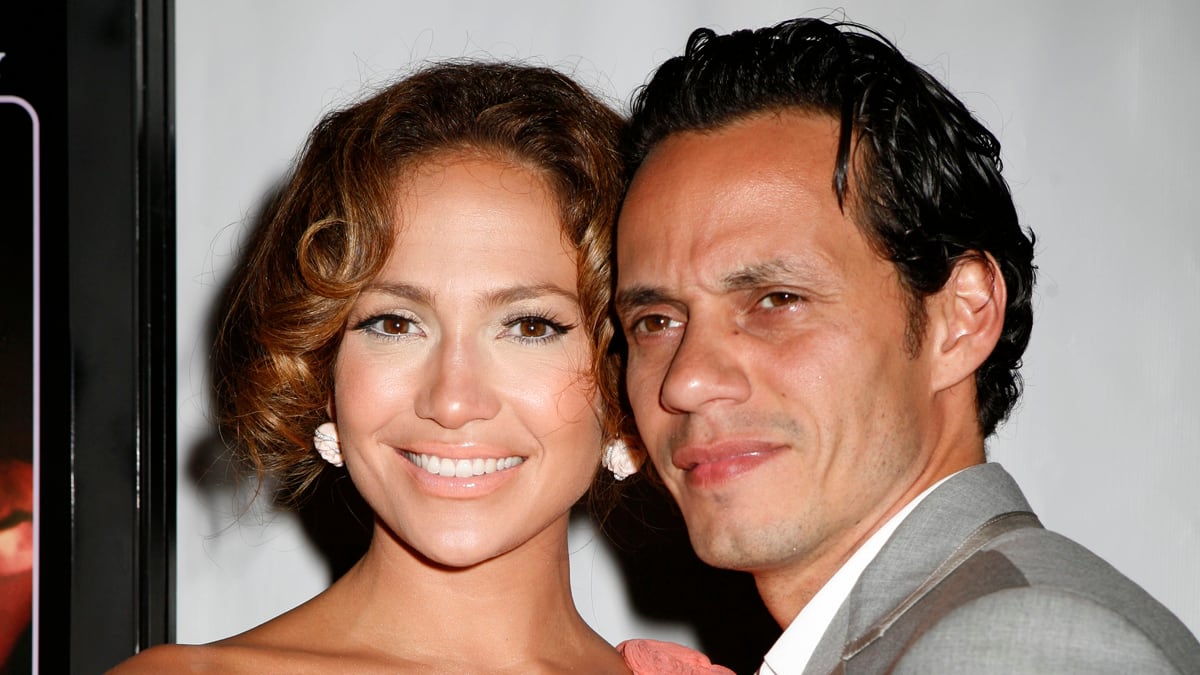Marc Anthony’s pallor reminds some people of a corpse. His skin tone and sunken cheeks have inspired unfavorable comparisons to Skeletor and a diabolical B-movie villain. But the man’s problem isn’t sex appeal—he is, after all, a Grammy-winning tropical salsa singer—so much as his proximity to beautiful women. Think about it: first, he marries a Puerto Rican actress whose good looks earned her the title Miss Universe. Then, in 2004, he weds Jennifer Lopez, just a girl from the Bronx who also happens to be People magazine’s Most Beautiful Woman in the World.
So with his split from Lopez this month, Anthony walks away from not only seven years of marriage, but also membership in a surprisingly large club: celebrities savaged for being “ugly” compared with their mates. Other targets include Michael Douglas, (Mr. Catherine Zeta-Jones), Jay-Z (Mr. Beyonce Knowles), and Geoffrey Arendt (Mr. Christina Hendricks)—none of whom might normally be fingered as Quasimodos, if not for their more glamorous Esmeraldas.

But attractiveness gaps aren't confined to celebrity pairings—we all know one or two couples who, whether they see it or not, seem to be from wildly different leagues. In 2006, a distressed reader of The Washington Post wrote for advice on whether she should preemptively leave a “cutie” husband of 12 years just because she had grown “frumpy by comparison.” The newspaper’s style columnist, Carolyn Hax, tried to nix the move. But it’s no surprise the woman felt the strain of disparity. Even as Hollywood and Hallmark bang the drum of love and destiny, people tend to abide by a fairly capitalistic law of matrimony: try to get the most attractive mate you can for what you have to offer.
ADVERTISEMENT
Academics, as it turns out, have some interesting things to say about how the broken and the beautiful survive as soulmates. “The fundamental rule,” says Michael Rosenfeld, a Stanford University sociologist who studies how couples form, “is that married partners tend to be the same on every dimension except for gender.”
In other words, opposites do not attract, they repel. And while there’s no large, long-term study of the relative hotness of American couples—the Census Bureau, alas, has not adopted the 10-point scale—virtually every small, short-term study has found similarities in religion, education, class, age, and indeed, appearance. Mismatches have “never been reliably demonstrated,” concludes David M. Buss, an evolutionary psychologist at the University of Texas, and author of The Evolution of Desire.
To explain the Ugly Husbands Club, Buss and his colleagues say that such discrepancies are in fact no mismatch at all. “As a general rule,” he says, “women tend to be more attractive than their husbands. The most general explanation is based in hard numbers—men place a greater premium on looks in a partner; women place a greater premium on personality, character, status, and income.” These “evolved mate preferences,” he adds, are also why powerful women may sleep with the occasional flesh toy, but only powerful men typically marry their much younger, hotter dalliances.
Economists and sociologists take a somewhat different perspective, often sounding like robots trying to become more human. In academic journals, there’s talk of “optimal feasible partner types,” an assumption that “potential spouses are rational and goal orientated,” and an alien-observer-like 1972 finding that in matters of sex, “the physical attractiveness of a potential partner or date is a particularly important concern.” But the scientific perspective is by now familiar to the astute bar-goer: The dating pool works like a marketplace, where men and women trade body, mind, and bank account, clamoring to get the most bang for their overall buck.
Worse, it doesn’t always yield the best matches. It’s silly to speculate on why any particular relationship failed—since supposedly long shot couples may not even see themselves that way, and there’s no large-scale data on whether people mismatched in appearance break up more regularly than the evenly paired. But science has fired its arrow here, too.
Buss says that homely women married to sexpot men are most at risk of the relationship failing. “Attractive men are known to have more sex partners, more affairs,” he writes, “so women married to these guys are at risk.” He’s less concerned about discrepancies that run the other way, however, as long as “overall mate value” remains roughly the same—as is the case in most supposedly mismatched celebrity couples, he says.
Leil Lowndes is far less sanguine. The veteran life coach and author wrote a 2003 book called Updating!: How to get a man or woman who once seemed out of your league. Now she advocates the opposite. “I wish I hadn’t written that book,” she tells The Daily Beast. “[Marrying up] is the wrong thing to do. It can really screw up your life. Tell people not to buy that book. I’m ashamed of that book. And you can print that.” Her reasoning is based on what she calls the “equity principle of love”—if people don’t roughly match in terms of money, status, education, character, personality and, yes, looks, they will struggle to last. “It’s mother nature’s plan,” she says.
It’s impossible to know why J. Lo and Anthony couldn't stay together while other mismatched spouses remain entwined. People magazine has reported that Anthony was a classic jealous husband, ever guarding against what scholars call “mate poaching” (and plainer folks know as “cheating”). But there’s really only one thing that brings two people together and keeps them that way, says Helen Fisher, a biological anthropologist at Rutgers University and the author, most recently, of Why Him? Why Her? It’s called self-deception. “As long as you continue to think that this person is right for you—no matter how irrational it may be—then it’s going to be a good marriage.”
If not, there’s always someone uglier.





